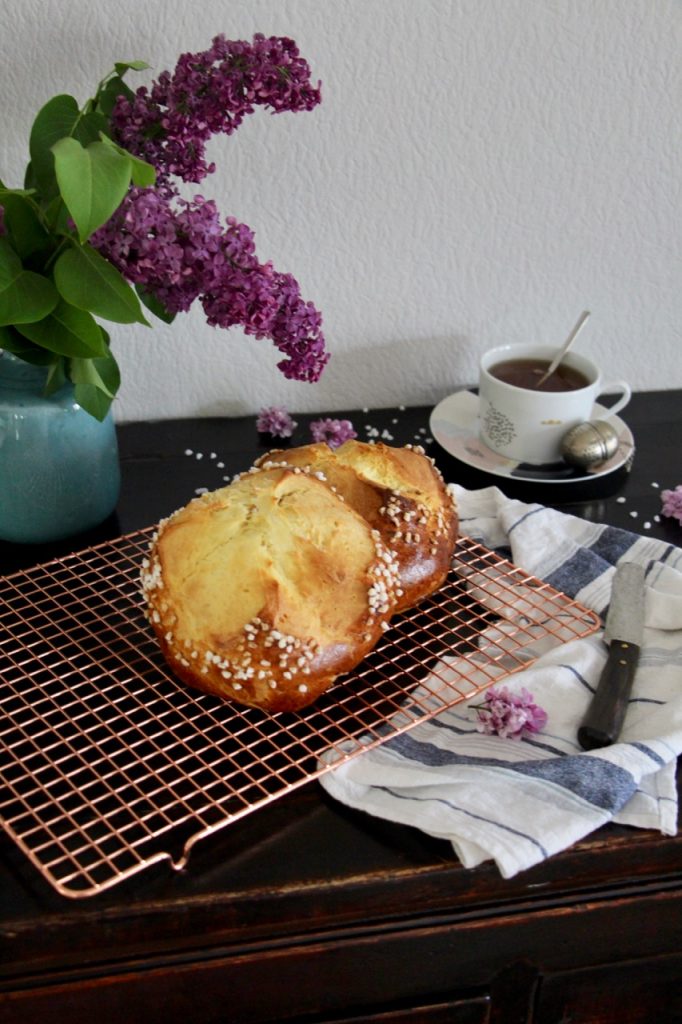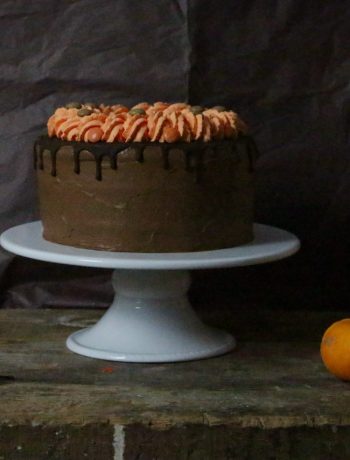I’ve been having this recipe in mind for years! Years that once Easter was gone, I told myself that I would make it the next year!
2020 I did it! With a bit of time lag, but I did it !!!! Victory!!
The brioche “mouna” from Oran !!

You know that I love brioches… If you hit “brioche” on the blog you’ll see…
And this brioche “mouna” from Oran keeps popping on my Facebook feed at Easter season since part of my family makes it every year.
My reputation was at stake!! 😉 I had to try even if Easter is already behind us…

Before going for the recipe, a bit of history…
The brioche “mouna” from Oran is a Pied-Noir recipe (undertand French national born in North African colonies).
The mouna was made by the mother and children; it was cooked at home or at the bakery. It was eaten on Easter day and the next Monday. This brioche wasn’t bought but made to be offered to family and friends.

The mouna or mona was introduced in the South of France, in the 60’s, when the Pieds-Noirs were brought back to France.

There are quite a few hypothesis about the origin of this brioche, mainly linked to the celebration of Easter.

Now let’s have a look at the recipe.
The process is similar to your usual brioche. Yet there are a few main differences:
– you will make a sourdough with anise tea
– there’s no milk but orange juice (that will give the special taste to this mouna)
– and there is only one rising time, but that will last a whole night!!
This should be taken into account when planning to make it… 😉

The utensils:
A food processor with kneading hook (it was made by hand back in the days… but…),
A small sauce pan,
A zest grater,
A juicer
And two baking mats (or two trays with baking paper).

You will make 2 brioches “mouna” from Oran, 500 g each.
There you go, let’s do this!!
The recipe, Chef!
Make a sourdough. Pour the anise seeds in a teacup. Boil a bit of water and pour in the cup. Let cool down at least 20 minutes (it shouldn't exceed 37 degrees). Place 125 g flour and the yeast in a bowl. Add the anise tea little by little (without the seeds) and mix. You should get a sticky mixture but not liquid (I put 12 teaspoons). Cover with a clean linen and let rise on your working plan. In the meantime start making the dough. Melt the butter. Place 375 g flour in your food processor bowl. Add the sugar, salt,eggs, melted butter, lemon and orange zests and the orange juice. Mix until you get an homogeneous mixture. Add the sourdough and knead for 10 minutes starting at low speed (2 on a scale from 1 to 6), then up to speed 4. Your dough shouldn't stick to the bowl. Add a bit of flour if needed (maximum 50 g). Cover with a clean and humid linen and let rise on your working plan all night long. The next day, preheat your oven at 180 degrees. Flour your working plan and pour the dough. Make two balls and place them each on a baking mat. Spread egg yolk mixed with milk. Spread sugar pearls. Make cuts like a cross with scissors. Bake 35-40 minutes. (check with a knife) Let cool down on a grid.Brioche Mouna from Oran
Ingredients
Instructions






 ( Vote !)
( Vote !)


8 Comments
Dalila
Saturday May 9th, 2020 at 09:53 AMMerci Emma pour ce partage!
Une recette qui me rend nostalgique(originaire d’oran et j’habite en Belgique) j’en prépare toujours et souvent même!cette délicieuse Brioche qui amène beaucoup de chaleur à la maison surtout au moment de la cuisson quand tout les arômes se dégagent(je mets aussi une cuill d’eau de fleur d’oranger) les enfants adorent aussi avec un bon morceau de chocolat ou de la pâte à tartiner,au lendemain,vous pouvez la rechauffer 10 secondes au micro-ondes afin d’avoir le chocolat bien coulant..miammm.
À Oran,On la vends aussi avec de la crème pâtissière,façon tropezienne! En effet ,souvent la Mona est distribué lors de fêtes:baptêmes,mariages ou alors aux cimetières quand on va sur les tombes des ancêtres et là il s’agit d’en faire une offrande.
Je vous conseille vivement de l’essayer et ta recette Emma est top! ????
Emma
Saturday May 9th, 2020 at 10:02 AMOh merci Dalila pour ce partage plein de douce nostalgie et de tradition ! Je note tous tes conseils. A appliquer très vite … 😉
Marie José GARNIER
Saturday May 9th, 2020 at 11:00 AMMerci pour ce partage Emmanuelle ! Ma famille est d’origine pied noir et espagnole. La mona est effectivement traditionnelle chez moi à Pâques. Aussi longtemps que je me souvienne , nous pétrissions en famille,à tour de rôle, dans une grande bassine le soir du vendredi saint . Toujours en quantité puisque nous partagions avec les voisins, les amis.
J’ai continué la tradition. Aujourd’hui avec le kitchenaid, le pétrissage n’est plus familial mais la dégustation est toujours attendue avec impatience par tous les gourmands !
Emma
Saturday May 9th, 2020 at 02:43 PMOui j’adore ce genre de tradition, c’est formidable de les perpétuer (même avec le kitchenaid 😉 ). Bon weekend !
LadyMilonguera
Saturday May 9th, 2020 at 04:34 PMTa mouna est magnifique !
Emma
Saturday May 9th, 2020 at 05:47 PMMerci beaucoup !! Elle a explosé dans mon four !! 😉
Les recettes de la débrouille
Sunday May 10th, 2020 at 08:49 PMJe ne connais pas du tout cette brioche mais elle donne envie. Celle que tu as faite est très jolie.
Emma
Monday May 11th, 2020 at 01:57 PMmerci beaucoup !